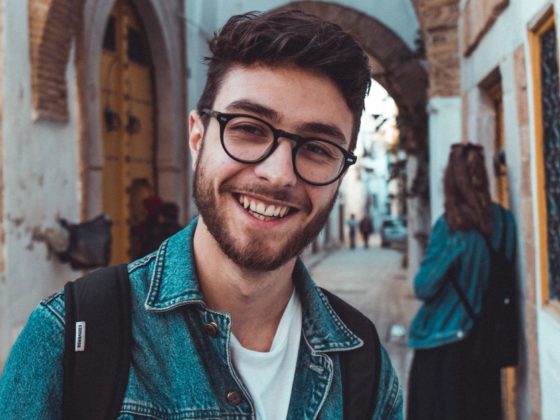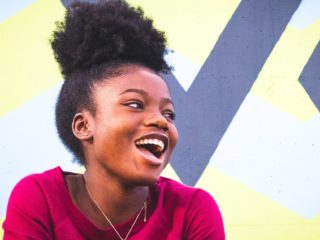Influencer marketing is growing exponentially and, when done right, is a highly effective marketing strategy. To launch successful influencer m2arketing campaigns, you’ll first need a winning influencer marketing strategy and some campaign inspiration.
In this article, we’ve gathered key learnings that will help you build a successful strategy. To inspire you, we’ve also shared 9 influencer marketing examples and highlighted the unique factors that contributed to each campaigns’ success.
Table of Contents
What is influencer marketing?
Influencer marketing is a form of marketing that leverages the power of influencers. Influencers are individuals who have a presence on social media. They’re often viewed as industry experts in different categories, such as fashion. Their followers trust their opinions and recommendations. By publishing quality content about your products and services, they’re capable of driving engagement with your brand.
Check out the 7 top benefits of influencer marketing to learn more.
How to build your influencer marketing strategy
To launch a successful influencer marketing campaign, you’ll need to have a solid strategy in place. Here are 7 key learnings to keep in mind to ensure you maximize your results:
Incorporate an always-on strategy
Rather than taking an ad-hoc approach to influencer marketing, you should collaborate with influencers on an ongoing basis. There are several benefits to taking on an always-on approach. You’ll be able to:
- Feed your other marketing activities with new quality content
- Have a constant flow of activity and engagement around your brand
- Be opportunistic and work with new influencers who reach out to you immediately, rather than waiting until your next campaign
- Build long-term relationships with influencers who performed well in collaborations. This will increase the authenticity and credibility of your collaborations
- Give yourself a boost during a specific campaign in your marketing plan
Define your goals and objectives
To have a successful influencer marketing strategy, you need to have clear goals in place. These goals can include:
- Building brand awareness
- Creating content to reuse in your social media marketing
- Generating sales or app downloads
- Increasing newsletter subscribers or followers on social media
By setting clear goals, you’ll be able to measure the success of your influencer marketing program. You can then assess how effective your campaign was using the methods further below. This way, you’ll be able to identify where you can improve for your next campaign.
Identify the influencers you want to collaborate with
A vital part of a successful influencer marketing strategy is finding the right influencers. But finding influencers who are compatible with your brand can be tricky. Use our guide on how to find influencers on Instagram to help you find the right partners. Here are several factors you should consider when assessing potential collaborators:
- The influencer’s engagement rate
- Content quality, as their ability to create content will reflect on your brand image and voice
- Their relevancy and compatibility
You’ll also need to understand who the influencers’ audience is. With our Audience Demographics feature, you can check their audience’s location, age, gender, and more. You can then use this information to select influencers who have an audience that you want to target.
Figure out fair compensation
Paying an Instagram influencer based on follower size is a common approach, but it’s an unreliable pricing strategy. As we’ve seen in our Benchmarks report, influencers reach a smaller proportion of their followers as their audience grows. By using this method, you’ll overprice creators by paying for followers you won’t reach.
To maximize your ROI, you can use our Pricing Calculator to determine a starting fee based on the influencer’s performance in reach and engagement. Then, you can adjust the starting fee based on how well you believe the influencer will contribute to your campaign goals. You can learn what factors to take into account when adjusting fees in our Pricing Guide.
Measure your campaign results
It’s important that you measure the results of your influencer collaborations to determine whether they’re a success. The method you use to measure your results can vary depending on your goals. For example, consider the following objectives:
- Brand awareness: You can measure the reach and engagements you achieved in the campaign. You can then compare it to our benchmarks to see how it performed. Check out our Instagam Benchmarks Report to see what results you should expect.
- Content creation: You can calculate the amount you spent for every piece of quality content. Then, you can compare the cost against the fees you would pay a creative agency.
- Online sales: You can track the number of sales that the influencers generated with unique discount codes or links.
You can then identify the influencers who performed well. You can work with them again in future collaborations.
Reuse the content from your collaborations
To maximize the value of your influencer marketing campaign, you can repurpose the content from your collaborations. You can redistribute them on your social media, newsletters, webpages, and more. Two reasons why you should reuse influencer content:
- The content has been user-tested, so you know it can elicit a positive response from an audience
- It’s cost-effective. Professional studios can charge high fees to create content that influencers are capable of creating at a lower price.
Handle incoming collaboration requests
If you succeed with your influencer marketing strategy, you’re likely to receive an influx of new influencers reaching out to you for collaborations. Take advantage of this by screening incoming requests to identify influencers who are a good fit for your brand.
Check out our post on influencer marketing strategy to learn more.
Types of influencer marketing campaigns
There are different types of influencer marketing campaigns you can launch depending on your budget and goals. Here are 6 of the most common types:
- Sponsored content
Sponsored content is the most popular type of campaign. It refers to collaborations where brands work with influencers to produce content that features their products or services on their social media.
Great for: Boosting brand awareness and creating reusable content - Long-term ambassadorships
With ambassadorships, brands collaborate with influencers for a long period of time. In addition to the benefits listed earlier in the article, using an always-on strategy helps keep your brand top-of-mind when the influencers’ audience makes purchasing decisions. It’ll also help you avoid time-consuming tasks, such as fee negotiations, which you’d need to do with every new influencer you onboard to a campaign.
Great for: Boosting brand awareness - Social media takeovers
Brands allow influencers to temporarily take over their social media channels. Influencers typically post about their takeover in advance to direct their audience from their profiles to the brand’s channels to interact with their takeover. This will: (1) expose brands to a new audience, (2) engage the brands’ existing audience, and (3) promote the brand’s products and services.
Great for: Boosting brand awareness, generating engagement, and increasing traffic & followers - Events
Brands invite influencers to attend events for product launches, concerts, and fashion shows to create a buzz around their brand. Influencers can capture behind-the-scenes sneak peaks of, for example, the brand’s new seasonal fashion lines or grand opening for their audience.
Great for: Generating engagement and boosting brand awareness - Competitions & giveaways
Brands typically give influencers a product or service that they can gift their followers in a competition or giveaway. The competition or giveaway normally involves the influencers’ followers: (1) giving a brand’s social media account a follow, (2) liking the influencer’s post, and (3) tagging a friend in the comments.
Great for: Boosting brand awareness and increasing traffic & followers - Discount codes & CPA deals
With campaigns involving cost-per-acquisition (CPA) deals, brands partner with influencers and provide them with unique discount codes or links to share with their followers. The discounts the brands offer incentivize their followers to make purchases. They track the results using the unique codes and links, then pay influencers for each sale or sign up.
Great for: Increasing sales and converting leads
9 examples of influencer marketing done right
Dunkin’ Donuts: National Donut Day
For National Donut Day, Dunkin’ Donuts launched a creative influencer marketing campaign on Snapchat. They collaborated with influencers to promote a special deal they were offering in different cities by creating teaser content.
On National Donut Day, the influencers took over Dunkin’ Donuts’ account and directed traffic from their social media channels to Dunkin’ Donuts’ Snapchat. They encouraged them to take advantage of the offer and follow Dunkin’ Donuts’ account. This resulted in them gaining 10x more followers than they would on an average month.
Takeaways: Snapchat takeovers are an effective way for you to achieve widespread exposure and expand your following. Because Dunkin’ Donuts utilized this method, they were able to generate a social buzz around National Donut Day and experience immense growth on their Snapchat.
Stadium: Move with Stadium
After launching two one-off campaigns, Stadium reached out to our influencer agency to launch a 7-month ambassadorship. They worked with influencers who matched their values and performed at or above industry benchmarks.
The influencers published 477 stunning pieces of content, which was great for Stadium’s influencer content strategy. Some of the content in the ambassadorship went viral, and Stadium was able to reach almost 2 million people and generated a 55% engagement rate.
Takeaways: Rather than launching purely one-off campaigns, Stadium developed long-term relationships with the influencers that they believed represented their values and brand well. This resulted in credible content that overperformed benchmark estimates.
Check out our influencer marketing case studies for more inspiring success stories.
Lagavulin Whiskey: My Tales of Whiskey
Laguvulin partnered up with Parks and Recreation star Nick Offerman to create a quirky 45-minute video. The video featured Offerman enjoying a scotch while staring into the camera by a crackling fireplace in complete silence.
The video went viral and generated 2 million views in 1 week. Lagavulin’s Youtube subscribers jumped from 5,500 to 23,000.
Takeaways: Laguvulin took a risk and put a humorous spin on a well-loved cultural phenomenon, the traditional yule log video. This really caught the imagination of their target audience.
Walmart & Sam’s Club: Fight Hunger. Spark Change.
To raise awareness and combat people’s struggle with hunger, Walmart, Sam’s Club, and Feeding America launched a campaign that invited their 150 million weekly shoppers to secure a goal of 1 billion meals. To raise awareness of the campaign, they partnered up with top influencers on Instagram.
The influencers published content to let their followers know that Walmart would donate $0.90 for every like, share, or comment with the hashtag: #FightHunger. This campaign, coupled with their other awareness efforts, helped Walmart surpass their goal of raising $1.5 million, which secured approximately 19 million meals.
Takeaways: Walmart & Sam’s Club launched an action-oriented campaign that engaged consumers and brought attention to a worthy cause. The influencers generating nearly 3,500,000 engagements on Instagram – their followers were clearly willing to participate in raising money for the cause.
eBay: #FillYourCartWithColor
eBay collaborated with influencers to encourage consumers to celebrate self-expression and fill their cart with color. The influencers highlighted vibrantly colored lifestyle items and encouraged their followers to buy items that reflect who they are.
They created a buzz by sharing a competition, where their followers could engage with their posts for an opportunity to win gift cards, which resulted in approximately 350,000 engagements.
Takeaways: eBay’s engagement proves that hosting competitions is a great way to gain exposure and incentivize potential consumers to engage with ecommerce brands, whether they’ve heard of you or not.
Bigelow Tea: DIY Projects
Bigelow Tea collaborated with DIY influencers who shared their passion for healthy living for the campaign. The influencers showcased Bigelow Tea in their own ways on their blogs by creating recipes and gift ideas. For instance, influencer Chrished Bliss created a recipe for Bigelow Iced Tea with Lemonade Ice Cubes.
The content resonated with their followers, and the posts generated 32,000 engagements. Bigelow Tea also experienced an 18.5% boost in sales during the campaign.
Takeaways: Because Bigelow Tea gave the influencers creative freedom, they were able to produce sponsored content that fit seamlessly on their social media. The content they published appealed to their audience because they had the freedom to create content they knew their audience would enjoy.
Boxed Water: The ReTree Project
Boxed Water collaborated with National Forest Foundation and influencers to promote the #ReTree Project. For the project, they promised to plant 2 trees in national forests for every post published with the hashtag #ReTree.
By working with both big and small influencers, Boxed Water was able to reach a large audience with their cause. By the end of the campaign, Boxed Water planted about 73,000 trees, but their commitment to replant trees is an ongoing project.
Takeaways: Boxed Water took on a cause that aligned with their company mission. Similar to the #TurkishAirlinesHelpSomalia campaign, they were able to have a positive impact on National Forest Foundation’s reforestation initiative, while simultaneously improving their reputation.
Microsoft: Make What’s Next
Microsoft teamed up with National Geographic to launch a campaign on International Women’s Day. Their goal was to empower young girls and encourage them to go into science, technology, engineering, and math (STEM) fields. National Geographic published 30 photos on their Instagram channels, @natgeo, @natgeotravel, @natgeoadventure, @natgeoyourshot, and @natgeochannel.
The photos featured prominent female explorers. The captions included an invitation to join free workshops at several Microsoft stores. The collaboration generated 4 million social engagements and 150 million impressions. Over 1,000 pieces of content were created using the hashtag #MakeWhatsNext. 300 girls ended up attending the Microsoft workshops.
Takeaways: Microsoft highlighted powerful stories of real people, which enabled them to engage and inspire an audience. They also timed their campaign with International Women’s Day. The conversation they started was able to contribute positively to the holiday.
Lyft: Undercover Lyft
Lyft wanted to show how meaningful connections can develop between drivers and passengers in their campaign. To do that, they partnered with celebrity influencers, such as Shaquille O’Neal and DJ Khaled, to film videos for a series Undercover Lyft on their Youtube channel.
The celebrities pretended to be Lyft drivers and interacted with their passengers. They revealed their identities to their passengers when the rides were over. Lyft’s Youtube series garnered over 1,000 press articles and 26 million views on Youtube, which helped Lyft raise awareness of their brand.
Takeaways: By creating the Youtube series, Lyft successfully positioned themselves as a playful, fun brand, which makes them appear more approachable. The campaign’s creativity also caught the attention of the press and their audience. This boosted brand awareness and memorability.










